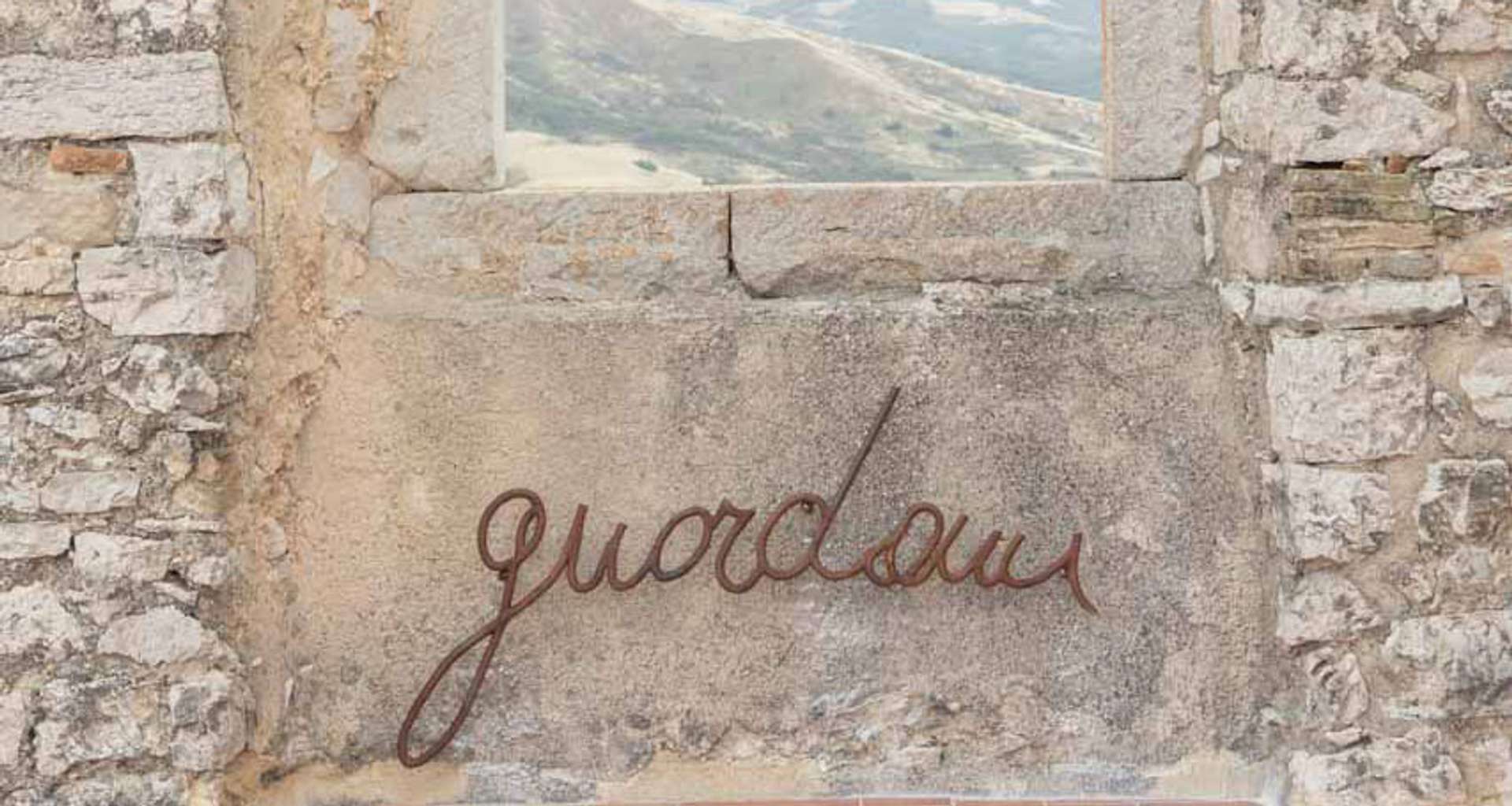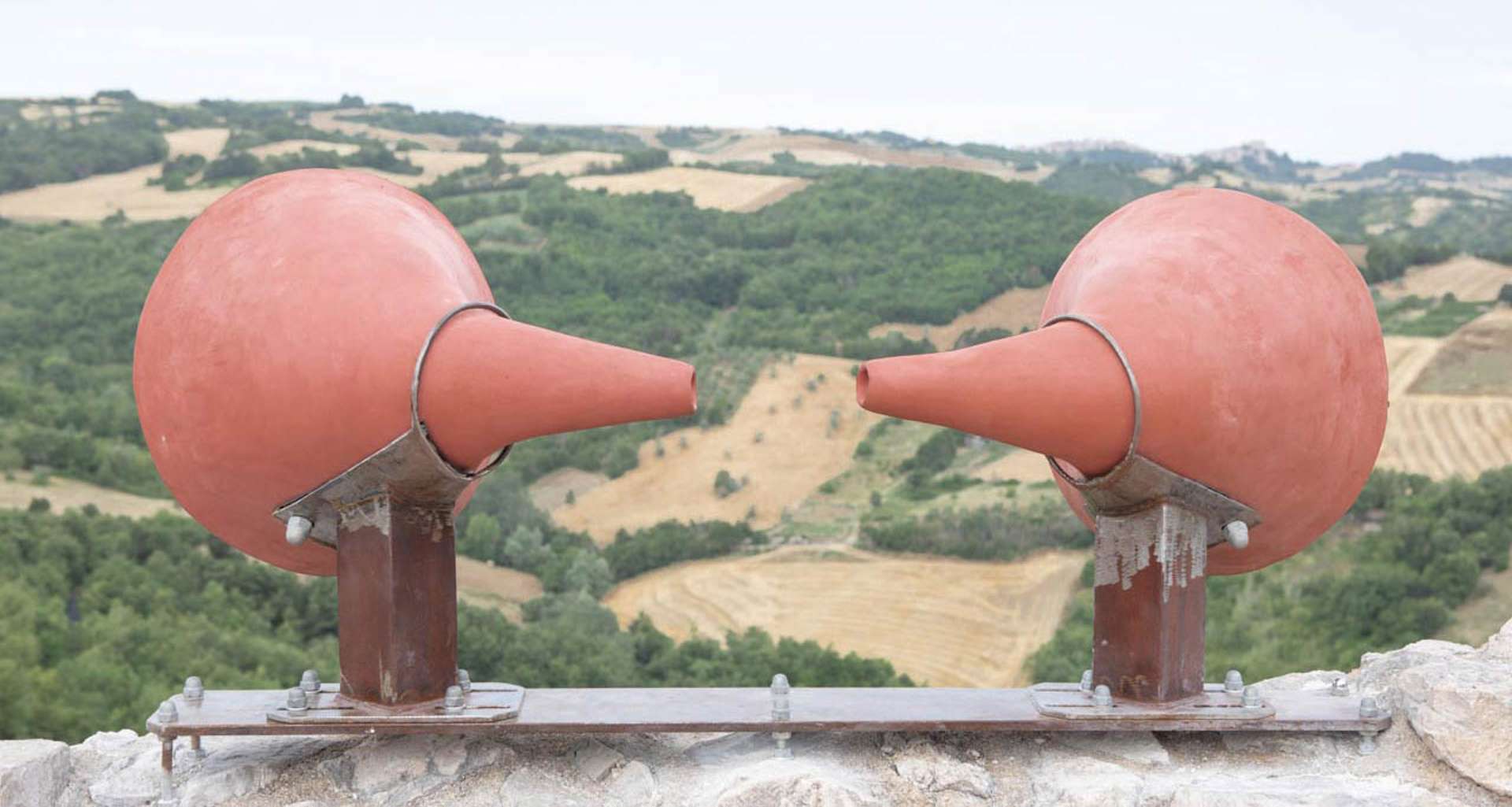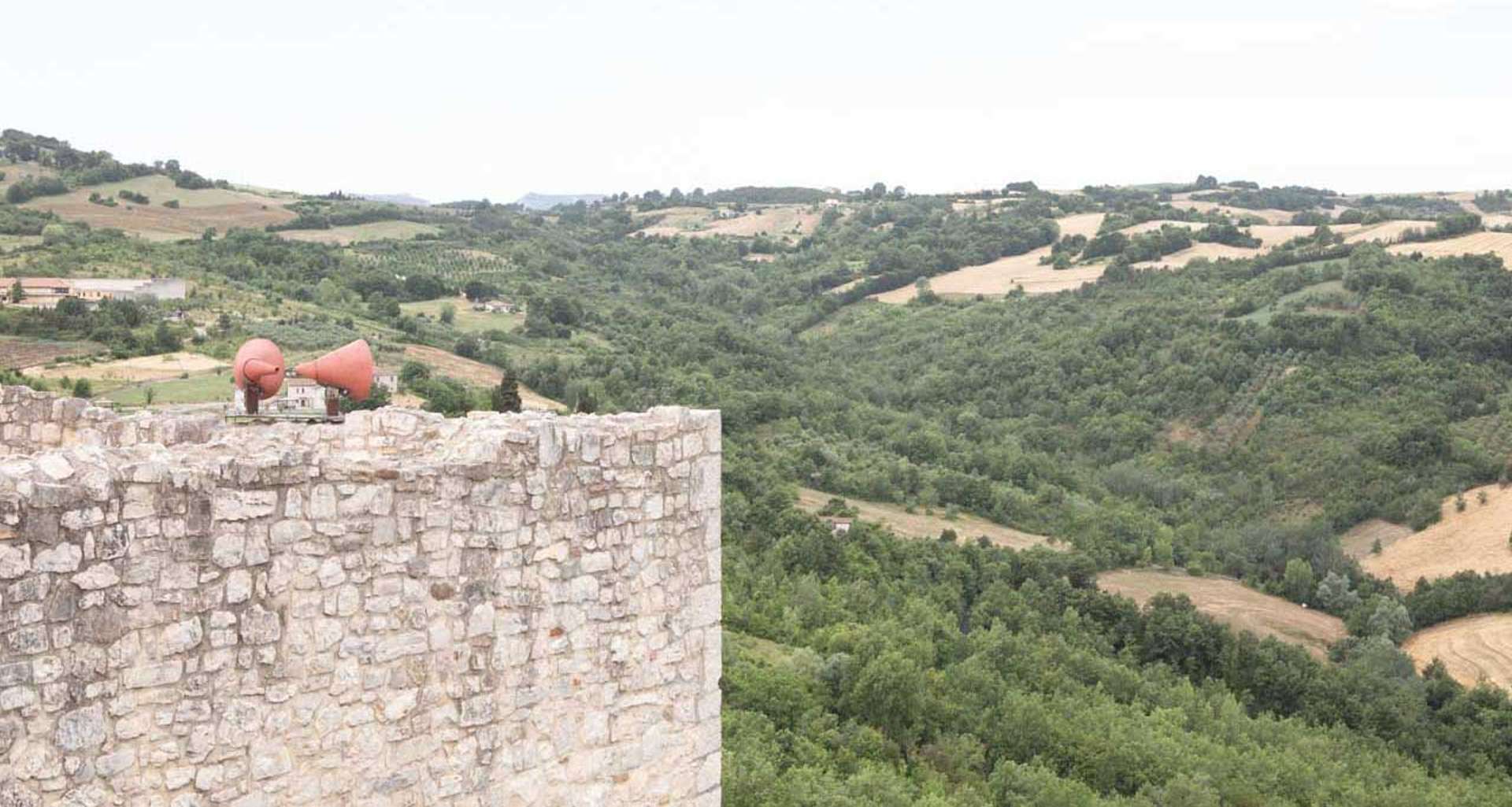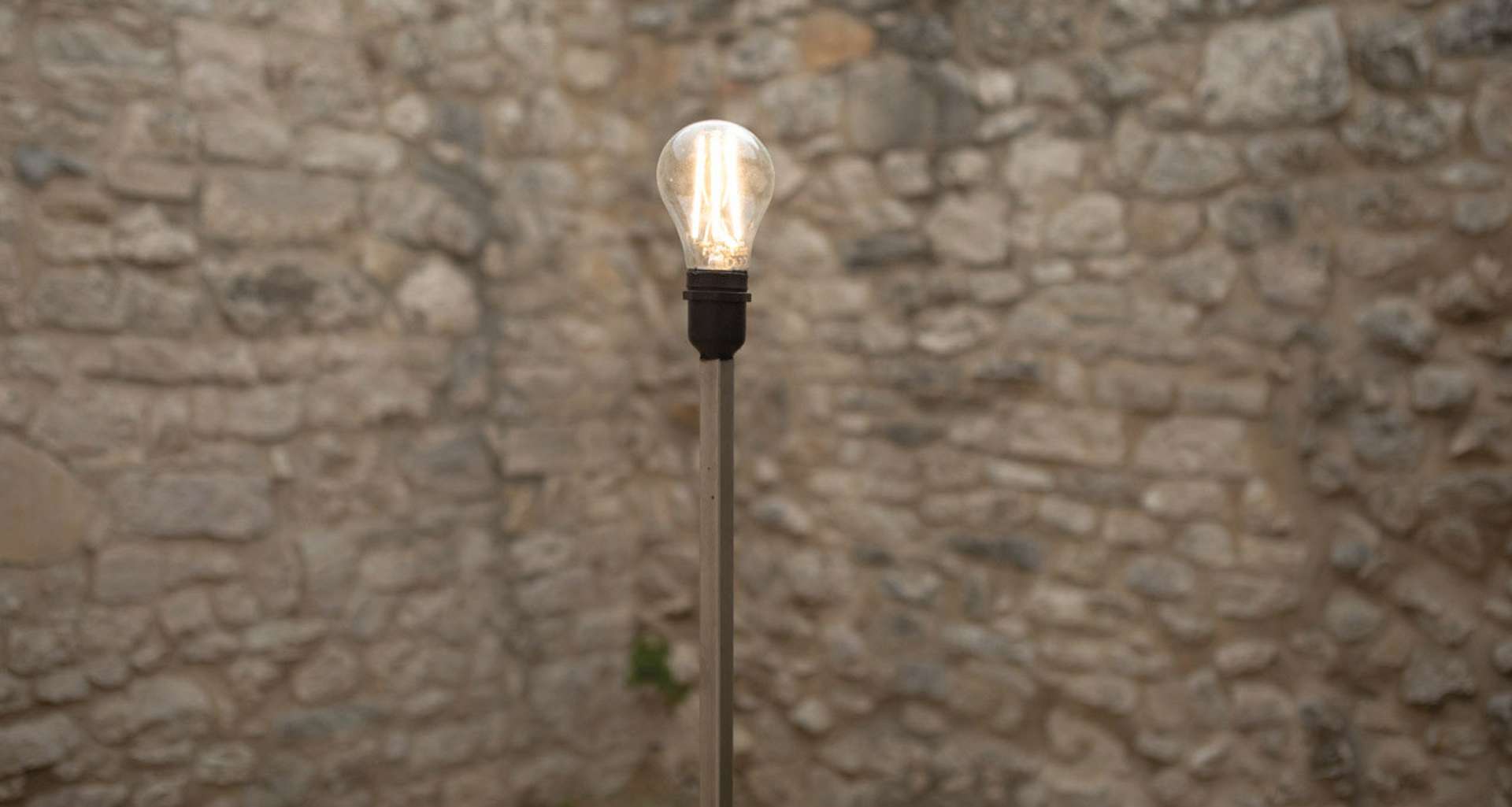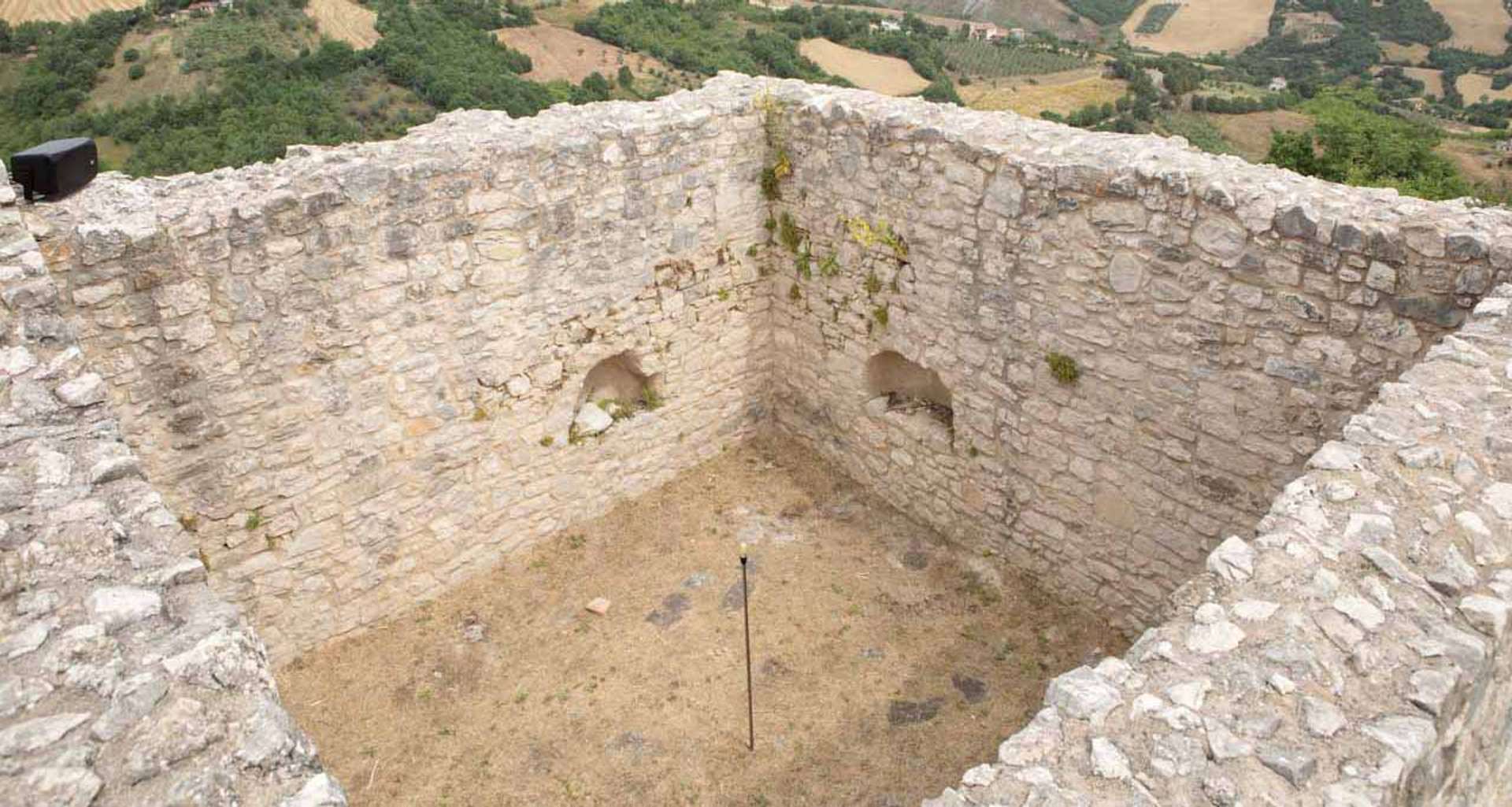“The afternoon of life is just as full of meaning as the morning”
C. G. Jung in Complete Works vol. 7, Part 114
ㅤ
The Biferno river winds its way through the centre of Molise in a wooded area full of valleys and mountains, dotted with small villages; following the bends in the river you suddenly come across Castropignano which stands in an elevated position dominating the valley. Tommaso Spazzini Villa first came here at the end of February when it was bitterly cold and the trees were covered with a thin blanket of snow.
Castropignano has a majestic Norman-era castle: the construction of the Evoli castle dates back to 1362 and it was commissioned by the family of the same name. It is located on a rock overlooking the Biferno valley, a rock pennant that looks over beech and oak forests where the Samnites once lived.
The castle, once teeming with life, is now in ruins, worn away by time and abandonment. There’s no roof over the upper floor, but you can still admire the majestic structure of the building: it is a monolithic giant that extends from the bare rock, guarding the town. It’s here that the artist has decided to concentrate his work.
The artist was inspired by the place and was curious about the possible connection between himself and the castle: asking himself what relationship can arise between the artist and the castle when his works will eventually be located there?
Tommaso Spazzini Villa wanted to create a concrete bond for life that isn’t conceptual but strongly physical. Life returns to the castle through the immateriality of the artist’s intervention that consists of a light turning on and off marked by the sound of the beat. In an interior room, the large drawing Senza titolo [Radice] deals with interiority and intimate and invisible bonds. The two works in the towers invite the visitor to hear and see through the eyes and ears of the artist who has become an integral part of the castle. This work is unique in so far as the stone castle can no longer be distinguished from the human being who experiences its spaces through his works.
ㅤ
Permanent works:
01. Tommaso Spazzini Villa, Senza titolo [Paesaggio sonoro], 2022, installation, audio, ceramic, iron, 140 x 150 cm.
Castropignano (CB), Molise
ㅤ
02. Tommaso Spazzini Villa, Con questi occhi guardami, 2022, wrought iron writing, 85 x 350 cm
Castopignano (CB), Molise
THIS IS A CASTLE THAT’S BEEN ABANDONED FOR TWO CENTURIES AFTER FIVE CENTURIES OF FERVENT ACTIVITY. MEN AND WOMEN HAVE LIVED IN IT - BIRTHS, LOVES AND DEATHS HAVE MARKED ITS EXISTENCE. FOR TWO CENTURIES, SILENCE AND ABANDONMENT HAVE REIGNED. THE STONES OF THE CASTLE ARE LIKE THE BONES OF A SKELETON LONG ABANDONED BY A LIVING BODY. FOR 100 DAYS, THE CASTLE WILL COME ALIVE AGAIN, LIKE A BEATING HEART WHOSE ECHO RESOUNDS WITHIN THE CASTLE WALL. IT WILL BECOME A PULSE THAT RECALLS THE LIVES OF THOSE WHO ONCE LIVED HERE. THE WINDOWS ARE PORTALS TO LOOK THROUGH, THE TOWER SPACES ARE PLACES IN WHICH TO LISTEN, AND THE ROOMS ARE WHERE MOMENTS OF INTROSPECTION CAN BE EXPERIENCED
Tommaso Spazzini Villa (Milan, 1986) is a young Italian artist who lives and works in Rome. Before moving to Rome, he studied economics at Bocconi University in Milan and was awarded a BA in History of Art from La Sapienza University and a diploma from the Accademia di Belle Arti in Rome. During his studies at the Accademia, Spazzini Villa focused on the technique of drawing, the medium of some of his most important series to date, which include Radici (Roots) and Impronte (Imprints).
Still early in his career, Spazzini Villa has had solo shows at Volta Gallery (Basilea, 2017), Satchii Gallery (London, 2016) and ProjectB Gallery (Milan, 2016). Collective exhibitions include: Oro d’Italia (Rome and New York, 2019), Yia Art Fair (Paris, 2015), START (Satchii Gallery, London, 2015) and Istanbul Contemporary (Istanbul, 2014).
LIFE RETURNS TO THE CASTLE THROUGH THE IMMATERIALITY OF THE ARTIST’S INTERVENTION THAT CONSISTS OF A LIGHT TURNING ON AND OFF MARKED BY THE SOUND OF THE BEAT
Castropignano is a picturesque medieval village of about 1,000 inhabitants in the province of Campobasso, perched on a rocky ridge, at 612 meters above sea level, from which it looks over the valley of the Biferno river. The origins of the town go back many centuries: the remains of stone walls date from the 4th century BC and confirm the presence on site of a Samnite fortress. The ruins of two villas found downstream of the town are, however, testimony to the subsequent Roman invasion.
3 km from the town is the hamlet of Roccaspromonte, a spectacular village perched on a panoramic rocky ridge. It was here that in 1777 a terracotta statue of Athena dating from the 5th century BC was found, now on display in the Kunsthistorisches Museum in Vienna.
In Castropignano it is possible to visit the fourteenth-century church of Santa Maria della Pietà with a beautiful contemporary portal and the Sanctuary of the Madonna del Peschio, a beautiful open-air church, whose dome is the sky and the walls are the oak trees of the nearby forest. The historic centre has the characteristics of the medieval village: through a maze of alleys that climb towards the top of the hill, you will find the bell tower and the remnants of the baronial clock tower.

